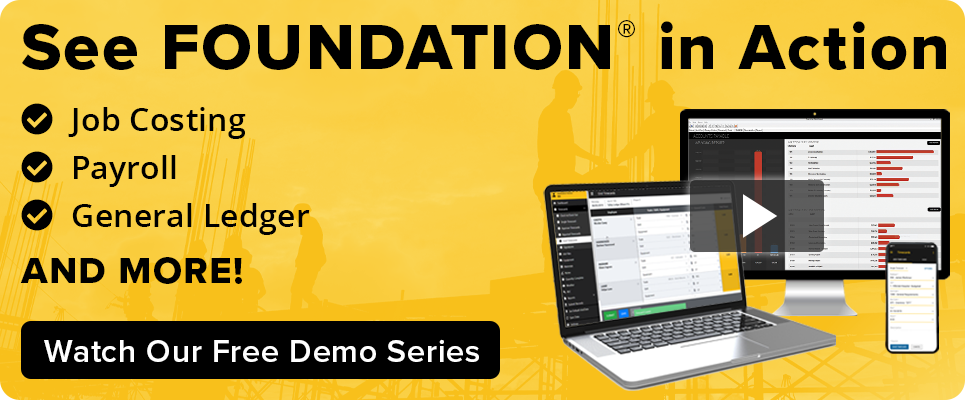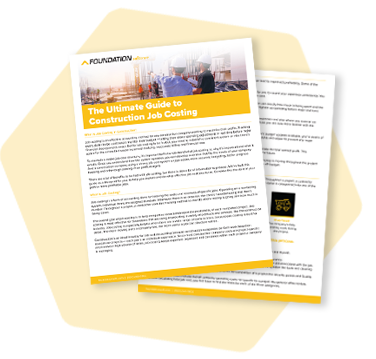Guest Contributor: Shannon Corgan, AboutTime
How can controllers and financial managers be confident in choosing the right time tracking solution for field employees that will also achieve accurate job costing? It’s a challenge to balance the needs of field employees and the accuracy of job costing reports. Job costing reports typically require considerable manual intervention with countless real locations, which affects accuracy and delays job costing and Work-In-Progress reporting. Here are three ways that a time tracking solution can help your business achieve the most accurate job costing reports faster than ever before:

1. Real-Time Accounting System and Time Tracking Integration
To improve accuracy and save time on job costing and Work-In-Progress reporting, businesses should select a time tracking solution that integrates with their accounting system in real time. With real time integrations, every time a new employee, project, task, or cost code is added to the accounting system, the data automatically updates in the time tracking solution to drive job costing accuracy. All of the project cost data in the accounting system and the employee time tracking system stay in sync, making it easy for field employees to track job costs to only active projects or cost codes/task since closed-out projects or archived cost codes/tasks will already be removed. When the accounting system and time tracking system are integrated, the accuracy of job costing is significantly increased and businesses can get real-time job costs to confidently know where each project stands.
2. Get the Right Job Costing Data to the Right People with Automation
Businesses often can’t get accurate job costs from the field because it’s too difficult and takes too much time for field employees to enter or allocate labor hours or production units to the right projects, cost codes, or tasks. To overcome this issue, pick list options need to be limited in the mobile time tracking solution and should only show pertinent projects, tasks/cost codes, and production units. Unfortunately, most companies have hundreds or thousands of current cost codes or projects and don’t have an automated way to filter job costing data to display only pick list options that are applicable to a certain department or an individual employee. If they set up automated permission profiles, only the relevant concrete jobs, as an example, would show for an employee working on the concrete crew — along with the associated cost codes and tasks assigned to that specific concrete project. Automated permission profiles get the right job costing data to the right employees automatically for the most accurate job costs.
3. Multiple Workflows to Accurately Enter and Allocate Time for Job Costing
A flexible mobile time tracking solution with multiple workflows will help businesses achieve job costing based on the level of accuracy they prefer. Multiple workflow options also allow businesses to select the timeliness of their job costing data.
For the most precise job costing, businesses should use a real time workflow, where employees enter time and allocate data in real time. When it’s done this way, labor hours aren’t estimated and businesses don’t have to rely on an employee’s memory to estimate the hours they worked or what they worked on at the end of the day or week.

The second most accurate workflow is time entry in real time with job costing allocation after-the-fact. Under this workflow, businesses achieve the most accurate labor hours by entering them in real time, but the job costing allocation of those hours is still an estimate.
Lastly, the third most accurate workflow is using a digital timesheet where time entry and job costing allocation are completed after-the-fact. When the digital timesheet integrates with the accounting system’s job costing, manual data entry errors are nearly eliminated, and there’s no misinterpretation of handwriting. Because of this, digital timesheets significantly improve job costing accuracy over paper.
Share Article
Keep on current news in the construction industry. Subscribe to free eNews!
Learn about our software more in depth with product overviews, demos, and much more!

Our ACA reporting & e-filing services include official 1094-C and 1095-C IRS reporting, optional e-filing (no applying for a TCC code required), mailing to your employees and experienced support to help you.

There are plenty of reasons to make FOUNDATION your choice for job cost accounting and construction management software — just ask our clients!

From job cost accounting software, to construction-specific payroll. Get an overview on your next all-in-one back-office solution.

